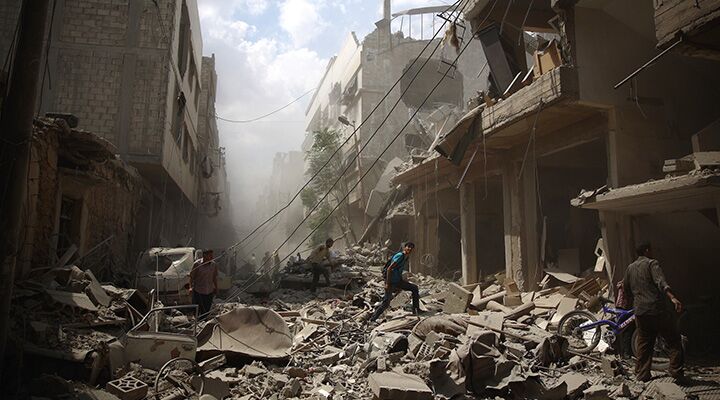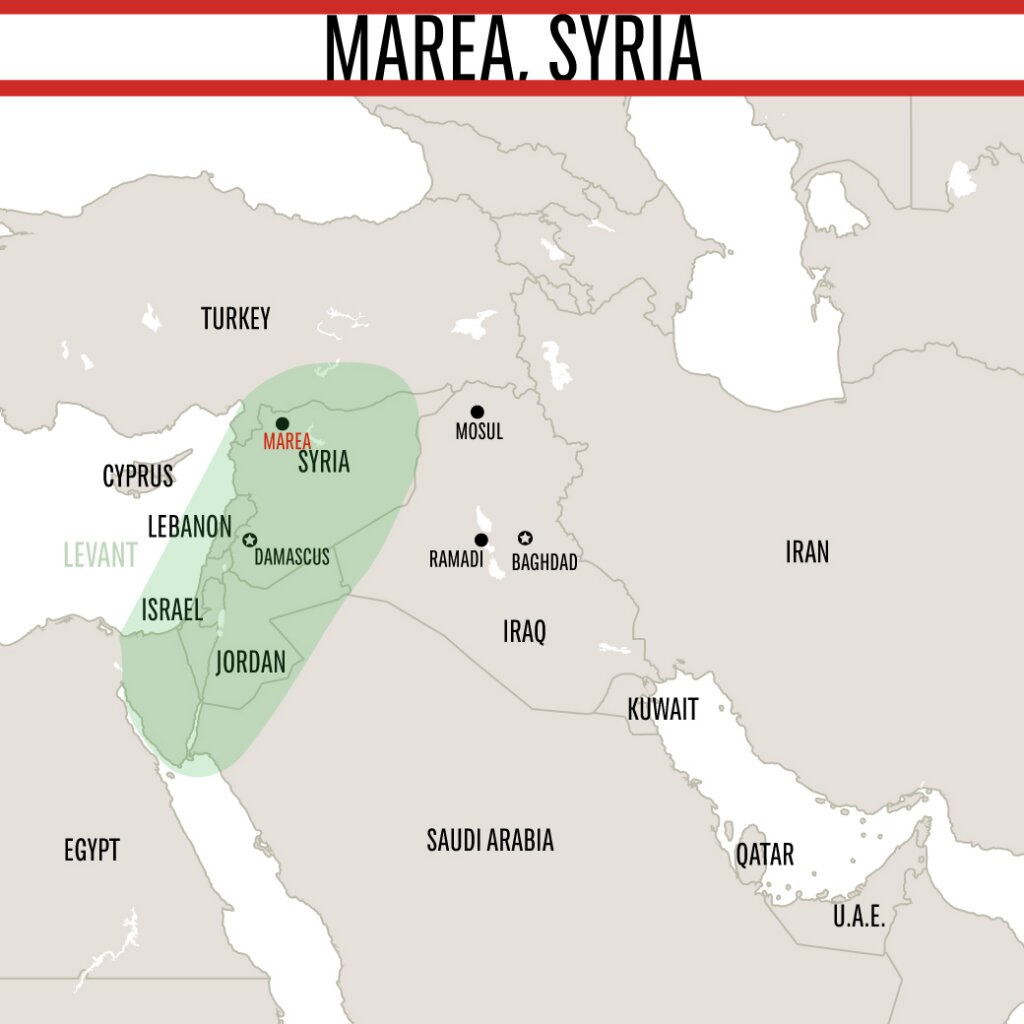
Islamic State Using Chemical Weapons
Allegations of chemical weapons attacks have surfaced again in Syria. But the perpetrator this time is not Syrian President Bashar Assad. The identity of the culprit could signal a far greater calamity in store for the Middle East.
First, a little recent history of chemical weapons in Syria.
All of Assad’s vast chemical weapons stockpiles were officially destroyed in August 2014, following a whirlwind 11-month procedure instigated by Russia. It was Assad’s last-ditch effort to avoid United States missile strikes.
The eradication of Assad’s chemical weapons was, as U.S. Secretary of State John Kerry claimed, conducted “in record time, even amid a civil war.” The New York Times called it “a rare foreign-policy achievement for President Obama.”
But the celebrations were short lived: Reports of Assad using banned chemical weaponry have continually surfaced since August 2014.
Where did these weapons come from if the entire disarmament deal destroyed all of Assad’s declared chemical weapons and facilities? Where did they come from if all of Assad’s declared military sites were opened to inspectors? Why, they came from Bashar Assad’s undeclared facilities!
Frighteningly, these chemical agents were seized by a new and equally dangerous threat: Islamic State militants.
On August 20, Islamic State mortars landed on the Syrian town of Marea. One family of four was rushed to the hospital after their house was struck. However, they didn’t suffer injuries from the mortar itself but rather what came with it. The family members complained of breathing difficulties. Then blisters developed. Since the initial strike, at least 50 more patients have been diagnosed as suffering from the effects of sulfur mustard: severely blistered and irritated skin and eyes, and damage to the respiratory system and other internal organs.
This powerful chemical is an irritant and blistering agent that inflicts massive damage to the skin and eyes. It then attacks the respiratory system and works its way into the internal organs.

The Syrian American Medical Society said its doctors have identified chemical agents from samples as mustard gas, corroborating the much more compelling evidence of 50 men, women and children who are now suffering the horrific effects of chemical weapons. And the sad reality is, this is just the start.
If the Islamic State has its hands on chemical weapons, then it no longer is a mere Syrian problem. The Islamic State has almost unrestricted access as far east as Ramadi in the Anbar province of Iraq. Have Islamic State terrorists already transported part of this chemical stockpile across the desert into Iraq?
Think about it: Assad may be limiting his usage of chemical weapons for fear of repercussions, but the Islamic State has no such hesitancy. It has shown time and time again that it is spoiling for a fight with the U.S. and regional powers. It is willing to leap into conflict in its barbaric conquest of the Levant and broader region. The Islamic state has proven that it will not hesitate to use chemical weapons on the civilian populations of Syria and Iraq. Ask the 50 burned residents of Marea.
Chemical weapons in the hands of madmen in the Islamic State show yet another vile milestone in the decline of the Middle East. But much like the Islamic State itself, this problem could have been avoided long ago. Once upon a time, the Islamic State was just a little rebel group in northern Syria. Once upon a time, Assad was genuinely fearful of American airstrikes. The U.S. had the opportunity to deal with Assad’s chemical weaponry, Assad himself, and the pathetic rebel groups that squabbled in the woodlands of Syria’s northern borders. But rather than face the problems, America took a back seat. Russia was allowed to concoct a deal with Assad.
The U.S. withdrew from Iraq in 2011, leaving the inadequate Iraqi military to fend for itself. America chose appeasement and menial airstrikes as opposed to an investment of power. The results are evident today. We have terrorists wielding chemical weapons and controlling large swathes of Syria and Iraq. What a horrific turn of events.
It is a horrific turn that the Trumpet has been warning of for years. Trumpet editor in chief Gerald Flurry wrote on this very subject in the December 2012 Trumpet issue. In his article titled “The Deadliest Mystery in the Middle East,” Mr. Flurry wrote:
About half of the country is now in the hands of Syrian rebels. Assad’s regime looks like it could fall any day. What might happen then? U.S. Secretary of Defense Leon Panetta has said that he is worried that Syria’s military could suddenly walk away from its chemical weapons without securing them. If that happens, terrorists could seize them!
Hezbollah is entrenched in Lebanon, Syria’s neighbor to the west. This terrorist group is allied with Syria. Those weapons could go from Syria to terrorists like Hezbollah [or the Islamic State], and from there to Western targets!
Terrorists with chemical weapons are not just a threat to the Middle East, they are a threat to the whole world! It doesn’t matter if you are a Syrian in Marea or an American in Memphis, a Briton in Manchester or an Australian in Melbourne—terrorists with these weapons are a threat to everyone.
But in the face of such dire milestones, notice how Mr. Flurry ended his article:
Matthew 24 tells us that if Christ didn’t come to stop this madness, there would be “no flesh saved alive.” But thank God that He is coming to stop the mass destruction and the mass murder and lead the Middle East and the world into a time of peace. We are on a countdown to that glorious event!
For more, read Mr. Flurry’s article “The Deadliest Mystery in the Middle East.”
